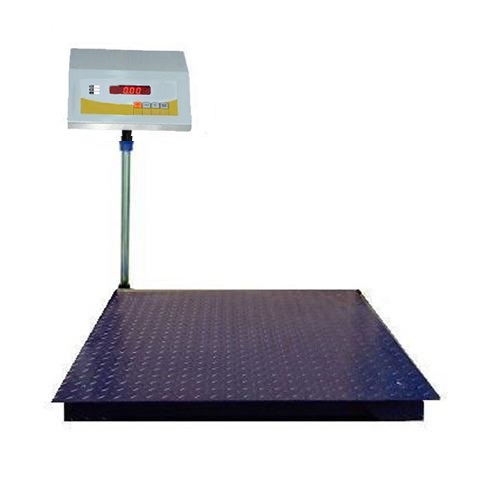A platform scale is a weighing device that consists of one or two metal plates that hold items to be weighed and can have a smooth surface. They are heavy duty simple tools that are very sturdy with a high capacity and come in a wide range of sizes, capacities, styles, and models in order to meet the needs of a variety of industries.
- Industrial platform scales have high weight capacities, typically ranging from 50 kg to 10 tons, depending on the model and application.
Platform Sizes
Operations Of Platform Scale
- : The platform size varies based on the scale’s capacity and the types of items to be weighed. Industrial platform scales can have platform dimensions ranging from small sizes 400 x 400 mm suitable for parcels to large platforms 1500 x 1500 mm for pallets or heavy machinery.
- CUSTOMIZED Size also Available .
Operating a heavy-duty platform weighing scale involves several steps to ensure accurate weight measurements and safe usage. Here's a general guide on how to operate a heavy-duty platform weighing scale:
Applications Of Platform Scales
- 1. Getting ready:
- Examine the scale:
- Check the heavy-duty platform scale visually for any wear, damage, or irregularities before using it. Make sure that every part, such as the cables, display unit, and platform, is in good operating order.
- Assembly and Positioning:
- Set the scale down on a level, firm surface: For stable weighing operations, place the heavy-duty platform scale on a level, firm surface.
- Attach wires and power: Check that all required cables, including the interface cable for connecting to a printer, are correctly attached before attaching the power supply to the scale.
- Zeroing the Scale:
- Ensure the scale is at zero: Verify that the scale is reading zero before applying any weight to the platform. To reset the scale to zero when there is no load on the platform, use the tare or zero function. By taking this step, the platform’s weight and any attachments are adjusted.
- Zero adjustment: Using a button on the display unit, some scales may need to have their zero adjusted manually.
- Setting Up and Assessing the Weight:
- Position the weight on the platform: Place the object or items to be weighed carefully on the heavy-duty scale’s platform. To avoid inaccuracies, make sure the weight is dispersed equally around the platform.
- Await the stabilizing phase: Permit the display unit’s weight reading to settle.
- 5. Resetting and Removing the Load:
- Take the load off the platform: In order to get ready for the subsequent weighing procedure, carefully take the load off the platform after logging the weight.
- Reset the scale: To prepare for the next weighing operation, use the zero or tare function once more to reset the scale to zero with no load on the platform.
- After-Operation and Maintenance: • Store the scale correctly: To prevent dust, moisture, and damage, store the heavy-duty platform weighing scale in a clean, dry location after use.
- Routine maintenance: Follow the manufacturer’s recommendations for routine maintenance, which include cleaning the platform, inspecting for loose connections, and routinely calibrating the scale to preserve accuracy.
- Logistics and warehousing: Pallets, containers, and cargo are weighed in logistics facilities, warehouses, and distribution centres.
- Manufacturing: Used to weigh components, final goods, and raw materials throughout industrial processes.
- Shipping and receiving: Used to confirm the weights of incoming and leaving shipments at loading docks and shipping regions.
- Recycling and waste management: Used at recycling plants and waste management facilities to weigh recyclables, refuse containers, and scrap materials.
.png)
